袁江、袁耀,生于康雍乾之世,山水楼阁界画,卓然清代画坛。江,字文涛,扬州人士,名震绘史,供职禁庭,专精于界画。耀,或作曜,字昭道,亦扬州之人,工山水楼阁,与江并列,清代界画名家,双璧争辉。
二人居于康熙、雍正、乾隆之朝,袁耀乃袁江之侄,与之齐名。其画风严谨,山水楼阁独步清代,世称“二袁”。“二袁”近师李寅、萧晨、颜峄、颜岳,远宗仇英及宋代诸名家,传派有李庆、倪灿诸人。
雍正时,袁江奉召入宫,供职祗侯。其山水画多师宋代闫次平,画石多用鬼皴,楼阁仿郭忠恕之法,工整严密。袁江所绘,多取材于古代宫苑,尤擅界画。画艺承仇英之风,深探郭忠恕之笔法,兼取赵伯驹、刘松年等青绿山水之脉,同时兼擅界画,遂为清代第一界画家。
Yuan Jiang and Yuan Yao, born in the Kangxi, Yongzheng, and Qianlong eras, were renowned for their landscape and architectural paintings, standing out in the Qing dynasty art scene. Yuan Jiang, courtesy name Wentao, was from Yangzhou. His reputation in art history is significant, serving in the imperial court and specializing in landscape and architectural paintings. Yuan Yao, also known as Yuan Yao, courtesy name Zhaodao, was likewise from Yangzhou. Skilled in landscape and architectural painting, he was as prominent as Yuan Jiang, and together they were celebrated masters of Qing dynasty architectural painting.
Both lived during the reigns of Kangxi, Yongzheng, and Qianlong. Yuan Yao was Yuan Jiang’s nephew and was equally famous. Their painting style was meticulous, making their landscape and architectural paintings unparalleled in the Qing dynasty, earning them the moniker “the Two Yuans.” The “Two Yuans” closely followed the styles of Li Yin, Xiao Chen, Yan Yi, and Yan Yue of the early Qing period, and traced back to Qiu Ying of the Ming dynasty and various masters of the Song dynasty. Their legacy included disciples such as Li Qing and Ni Can.
During the Yongzheng period, Yuan Jiang was summoned to the court to serve as a court painter. His landscape paintings primarily followed the style of Yan Ciping of the Song dynasty, using the ghost brush technique for rocks and emulating the architectural precision of Guo Zhongshu. Yuan Jiang’s works often depicted ancient palaces and gardens, with a particular expertise in architectural painting. His art followed the tradition of Qiu Ying, delving into the techniques of Guo Zhongshu and drawing from the green landscape tradition of Zhao Boju and Liu Songnian, solidifying his position as the foremost architectural painter of the Qing dynasty.



《骊山避暑图》
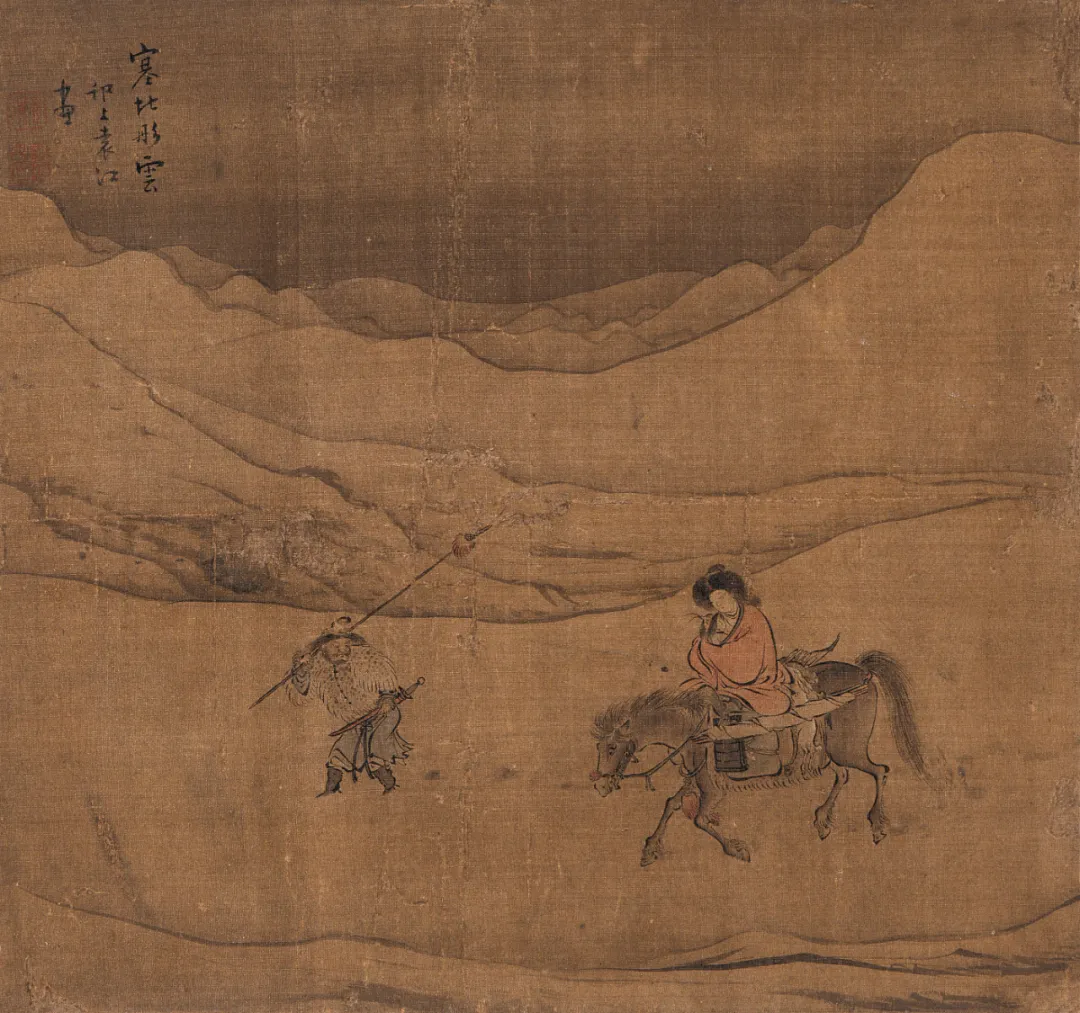
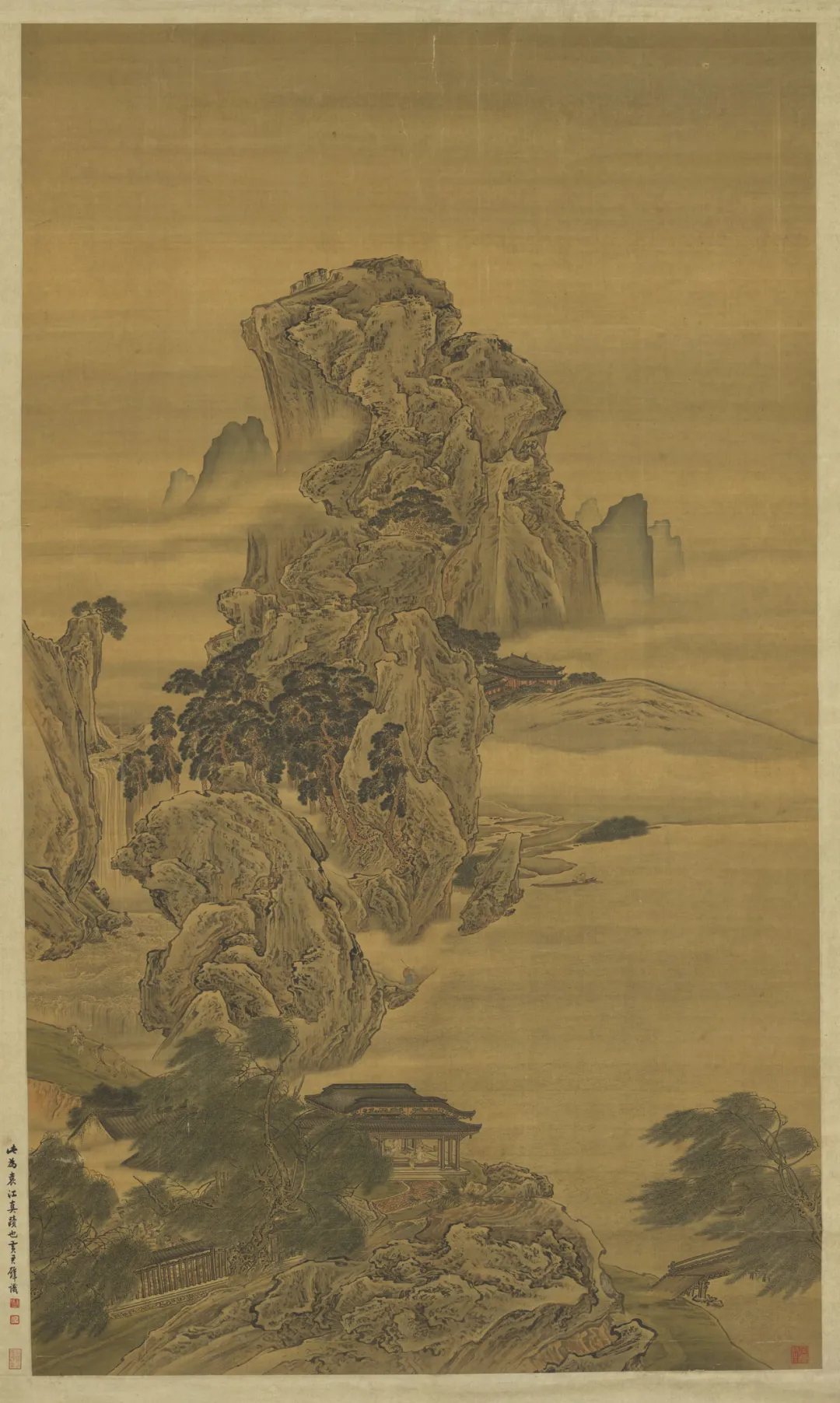


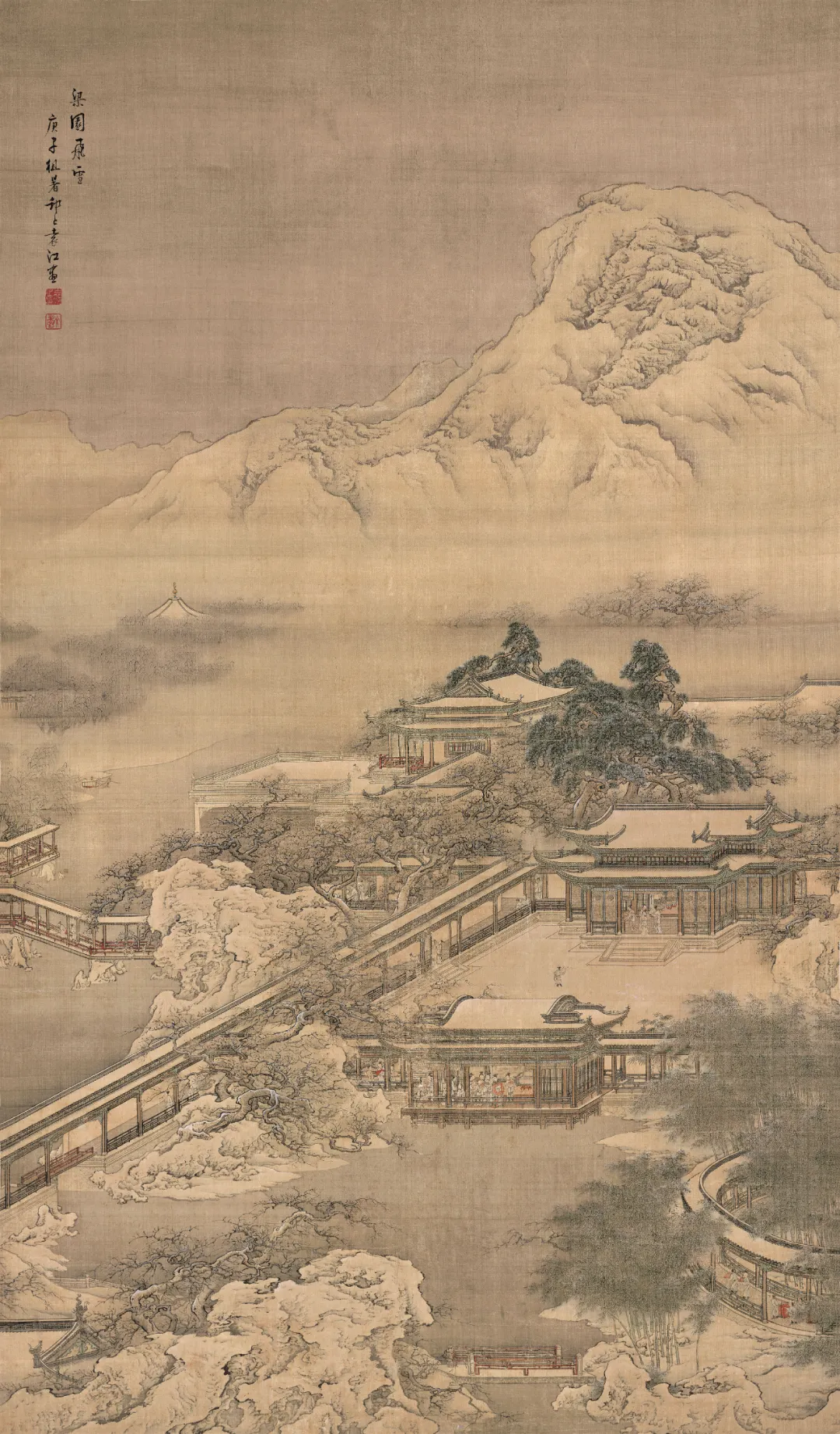
袁江早年游历民间,专事绘事。于康熙、雍正、乾隆年间,楼阁山水,工整之名,世推袁江。江与袁耀,曾为扬州之山西盐商所延,赴晋作画,久留扬州及江浙,作品多传于北地。其擅山水楼阁,初师仇英,中岁时细摹古迹,尤钟宋代山水,艺业大进。画传功力深厚,尤继青绿山水之脉,所作浑朴有致。中年得无名氏所摹古稿,技益精湛。其画雄伟山色与富丽楼阁,相融一体,细腻入微,气势磅礴,极大彰显界画之妙,被推为清代界画第一。
其画以唐明皇骊山避暑为题,描楼台殿阁,古木参天,散布山岭之间,湖光山色,构图繁丽,气象宏伟,精细入微,尤以深山宫殿为最。设色浓艳,辉煌夺目,尽显其画艺之精妙,蔚为壮观。
袁江之画,精笔细笔,各擅其长。多为工整细致之作,间有笔意粗放者。江除善山水楼阁界画外,亦兼花卉,遗作尚存。二袁之风,相类至难分,若不署款,几不可辨。如《骊山避暑图》与《巫峡秋涛图》,骊山之雄,长江之壮,画中山石、树木、屋宇、舟楫,形制皆似。其山石多用大、小斧劈皴,卷云皴及鬼面皴,质感深厚,山体扭曲变形,势如破竹;树木虬劲古拙,枝杈横生,结疤满布;屋宇以界画法绘之,形准势妥;舟楫刻画细腻,工致无比。二袁皆为全能之匠,除界画外,尚有粗放写意山水,如《寒山万木图》即是。亦兼擅花鸟,画风严谨,造型准确,设色淡雅,情趣盎然。
Yuan Jiang spent his early years traveling among the common people, devoted to his craft. During the Kangxi, Yongzheng, and Qianlong periods, his reputation for precise and meticulous landscape and architectural painting was unparalleled. Yuan Jiang and Yuan Yao were invited by Shanxi salt merchants in Yangzhou to paint in Shanxi, spending considerable time in Yangzhou and the Jiangsu-Zhejiang region, with many works circulating in the north. He excelled in landscape and architectural painting, initially following Qiu Ying and later meticulously copying ancient works, particularly Song dynasty landscapes, which greatly enhanced his skills. His art conveyed profound skill, especially in continuing the tradition of green landscapes, which were simple yet refined. In his middle years, he acquired anonymous ancient manuscripts, further honing his skills. His paintings masterfully combined grand landscapes with magnificent architecture, exhibiting both intricate detail and grandiose scale, significantly enhancing the expressive power of architectural painting, making him the preeminent architectural painter of the Qing dynasty.
One of his paintings depicts the Tang Emperor enjoying a summer retreat at Lishan, featuring pavilions and halls surrounded by ancient trees, scattered among the mountains, with a lake below. The composition is intricate and grand, with meticulous detail, especially the palace nestled deep in the mountains. The colors are rich and vibrant, showcasing his exquisite painting skills.
Yuan Jiang’s paintings featured both fine and meticulous styles, with most being carefully detailed, and some displaying a more relaxed brushwork. Besides his mastery in landscape and architectural painting, he also created flower paintings, some of which have survived. The styles of the Two Yuans were so similar that without signatures, their works were difficult to distinguish. For example, in “Lishan Summer Retreat” and “Autumn Waves in Wuxia,” the grandeur of Lishan and the majesty of the Yangtze River are vividly portrayed, with striking similarities in the depiction of mountains, trees, buildings, and boats. The mountains are rendered with axe-cut strokes, cloud-pattern strokes, and ghost-face strokes, giving them a textured appearance, with twisted and dynamic forms. The trees are rugged and ancient, with branches sprawling and knots visible. The buildings follow architectural drawing techniques, accurately shaped and appropriately arranged, while the boats are finely detailed and intricately crafted. The Two Yuans were versatile artists, also capable of expressive landscape painting with a more relaxed brushwork, such as in “Cold Mountain and Myriad Trees,” and were skilled in bird-and-flower painting, characterized by precise brushwork, accurate shapes, elegant colors, and rich charm.

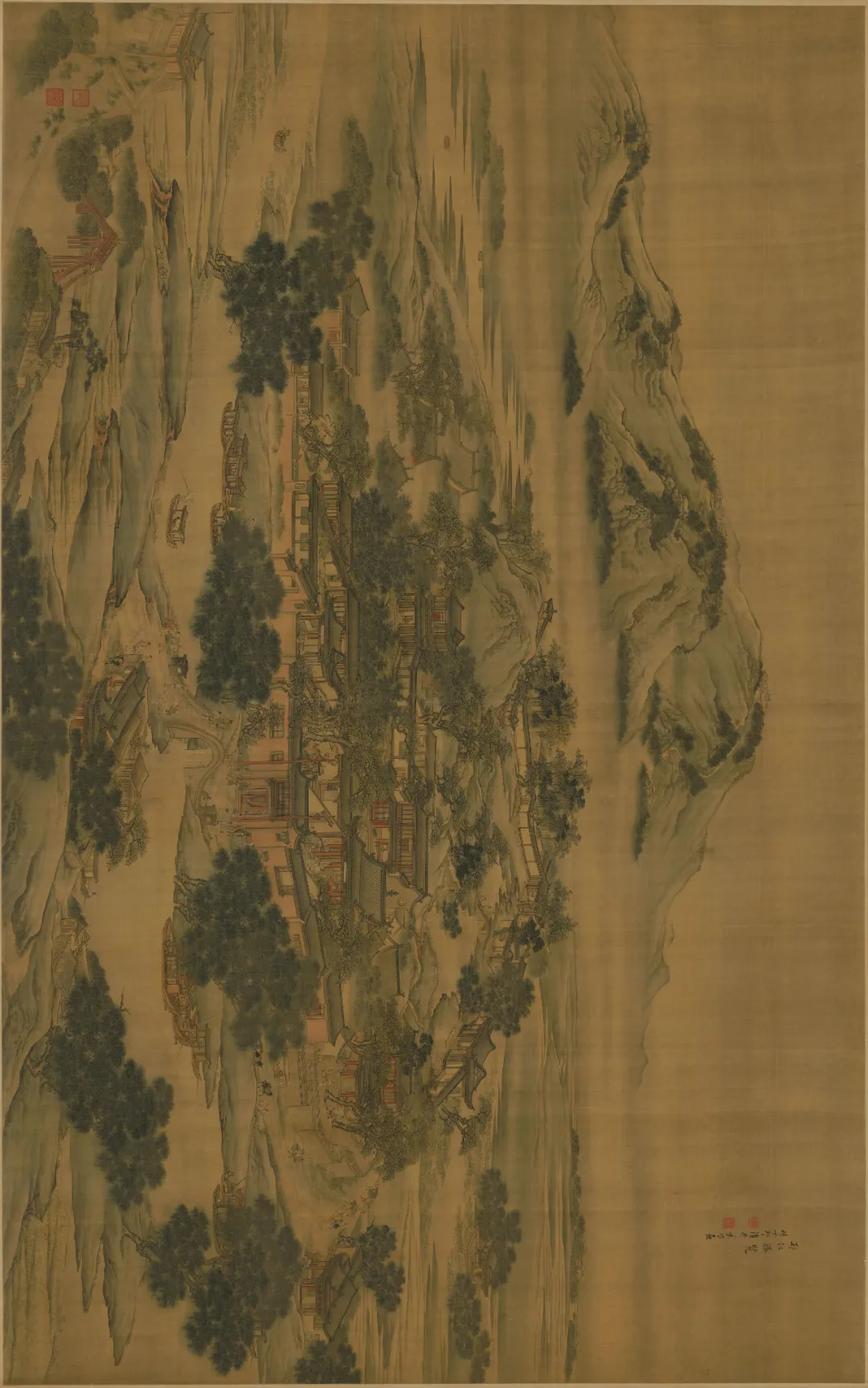
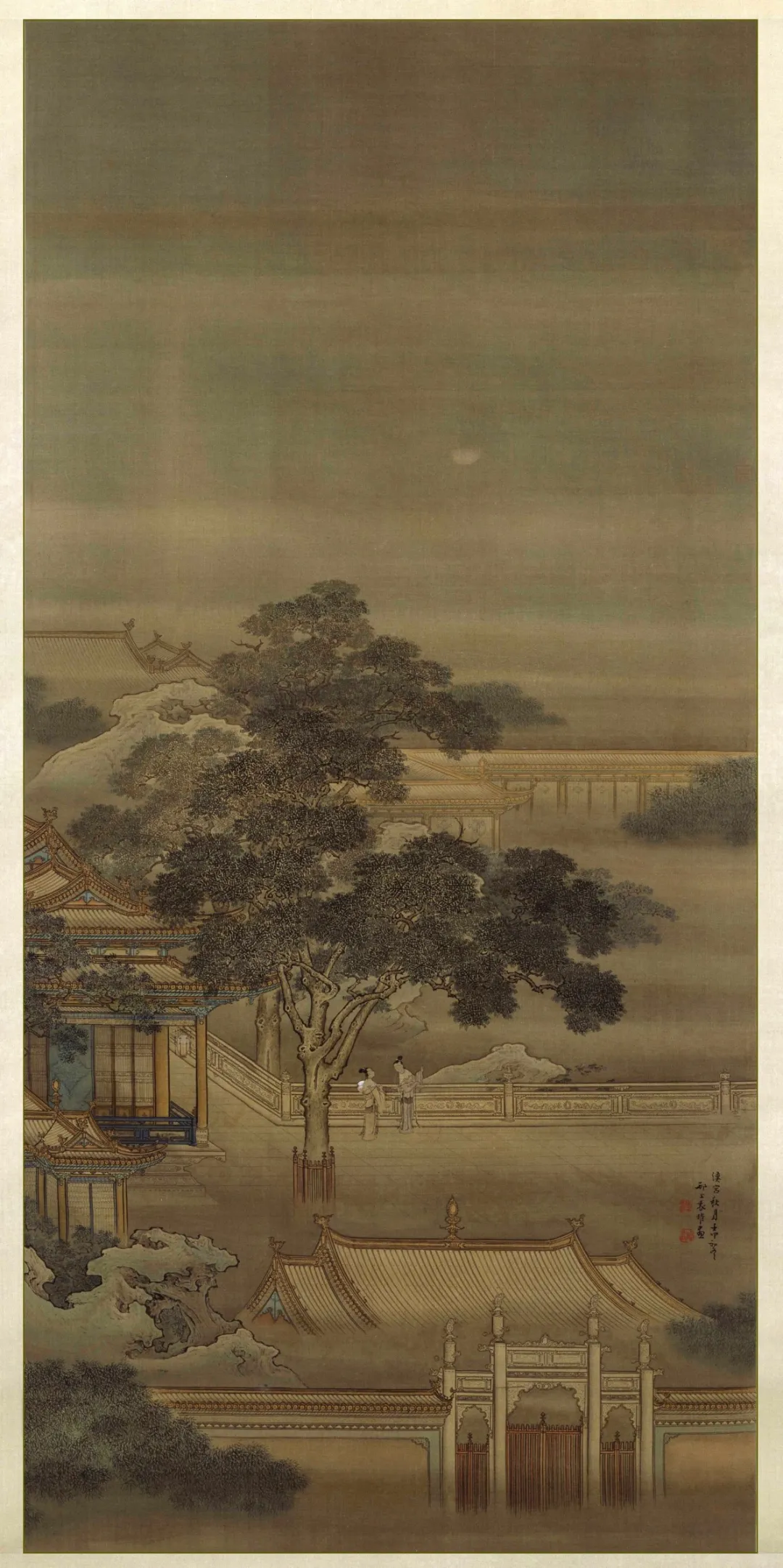
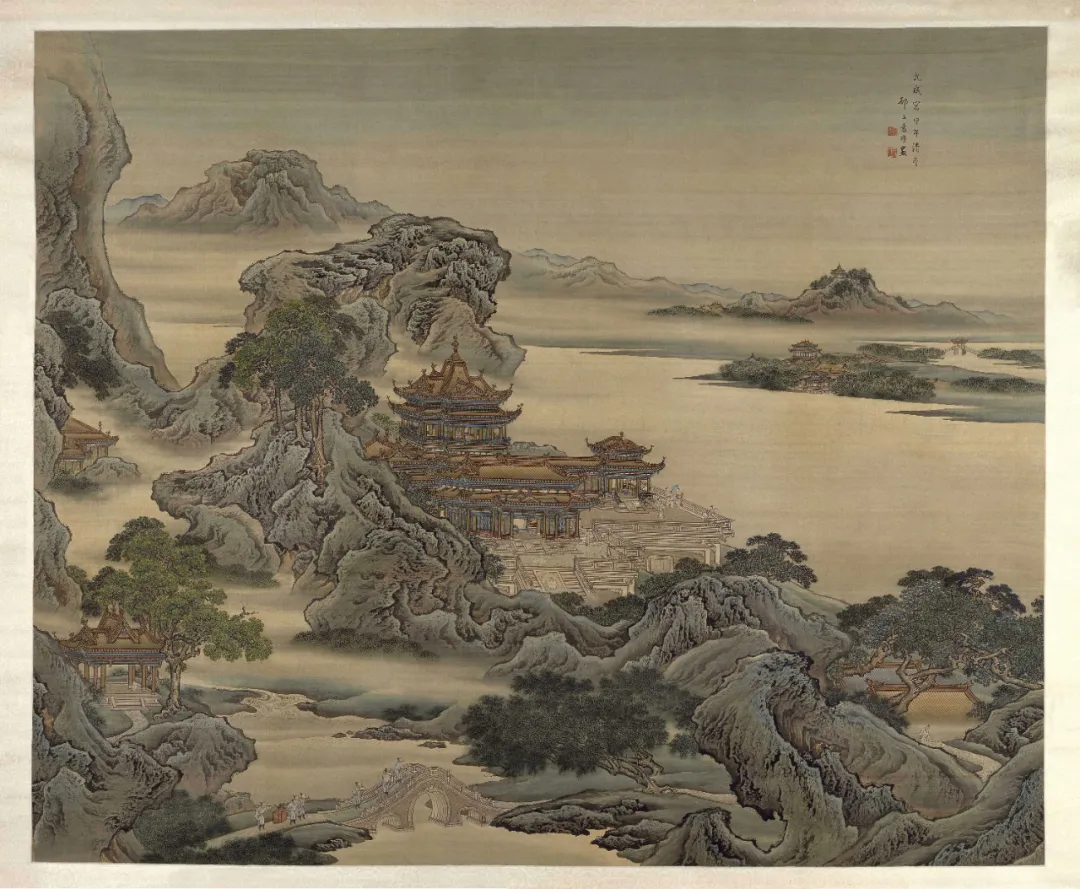
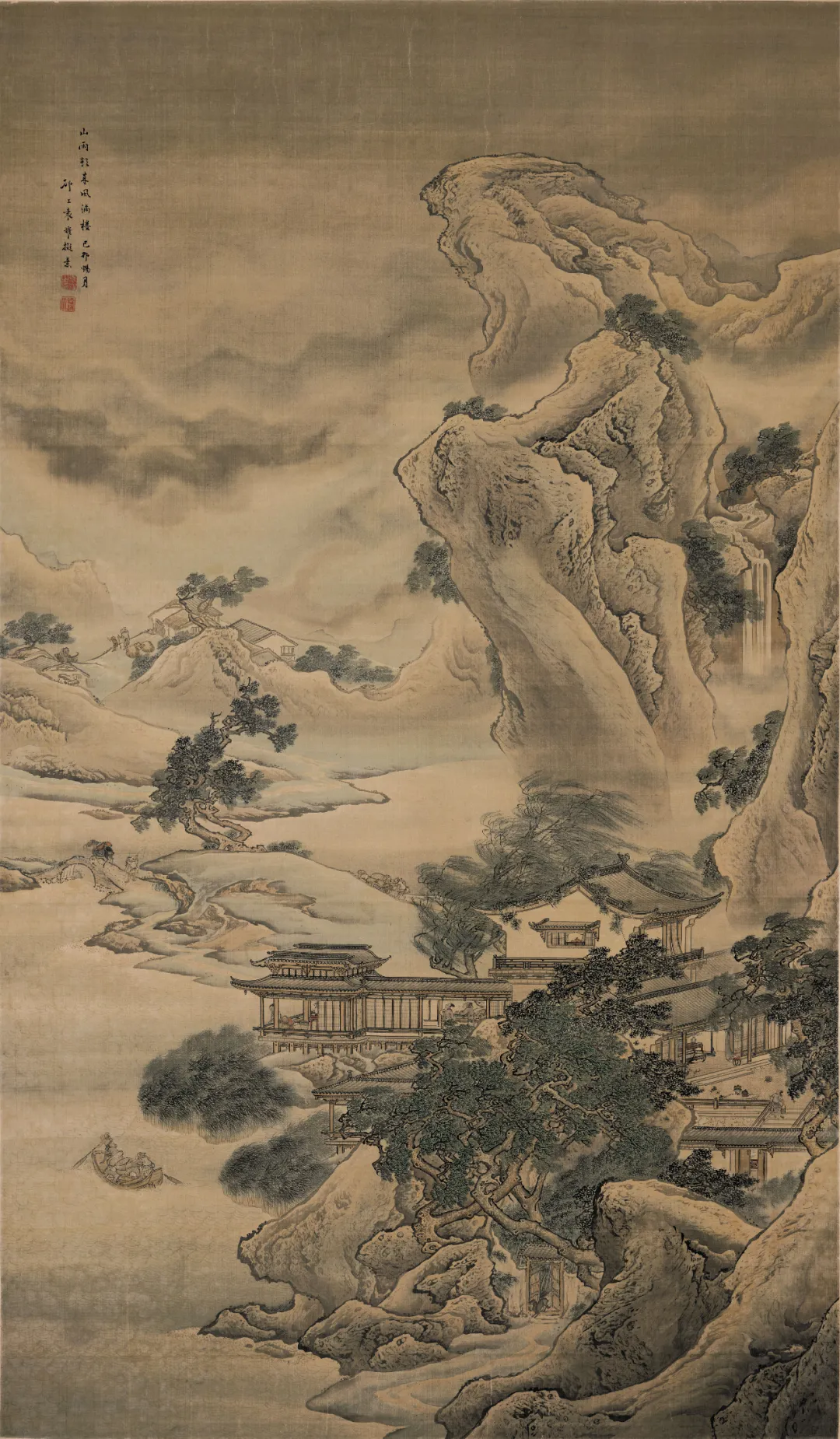
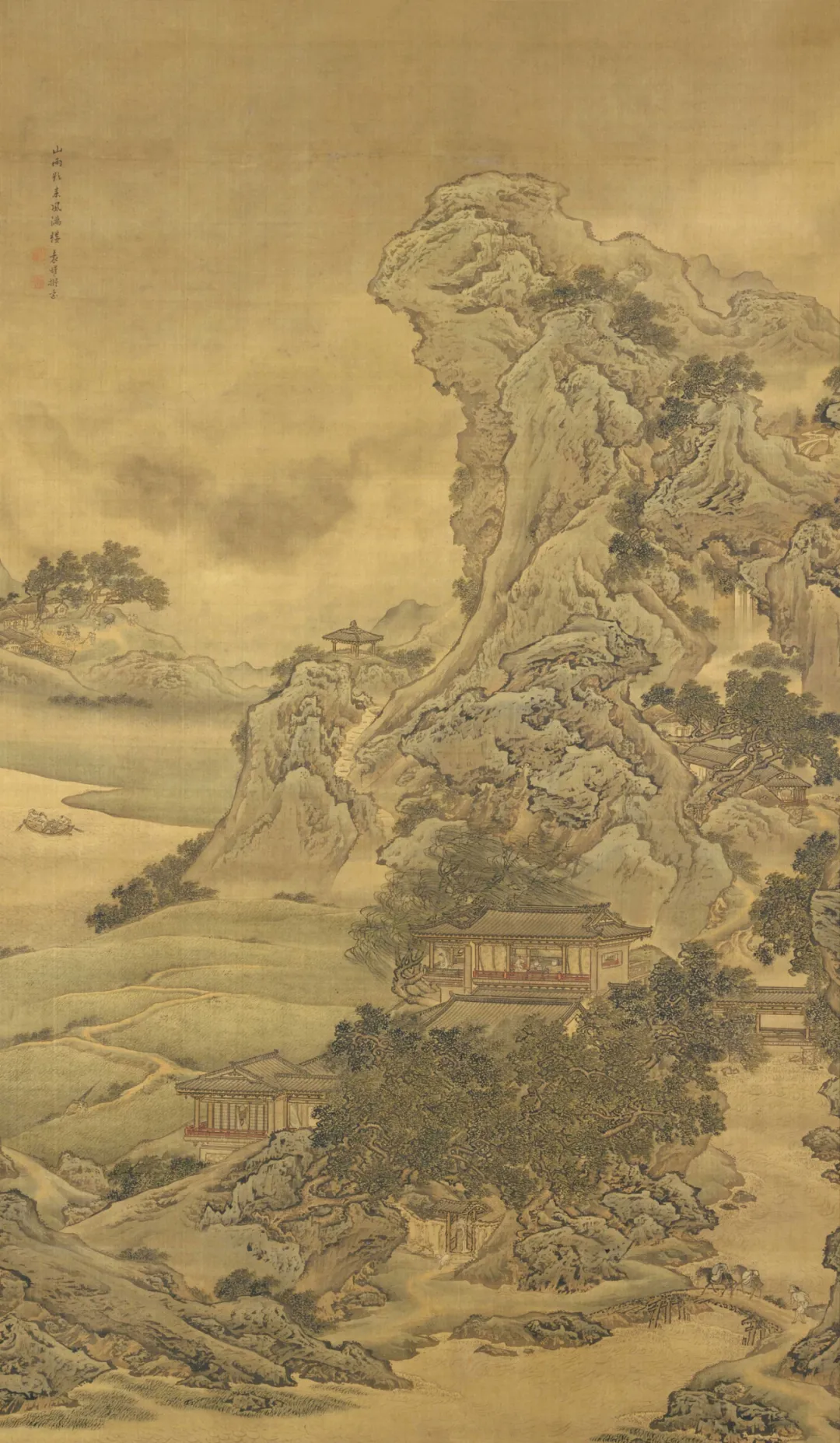
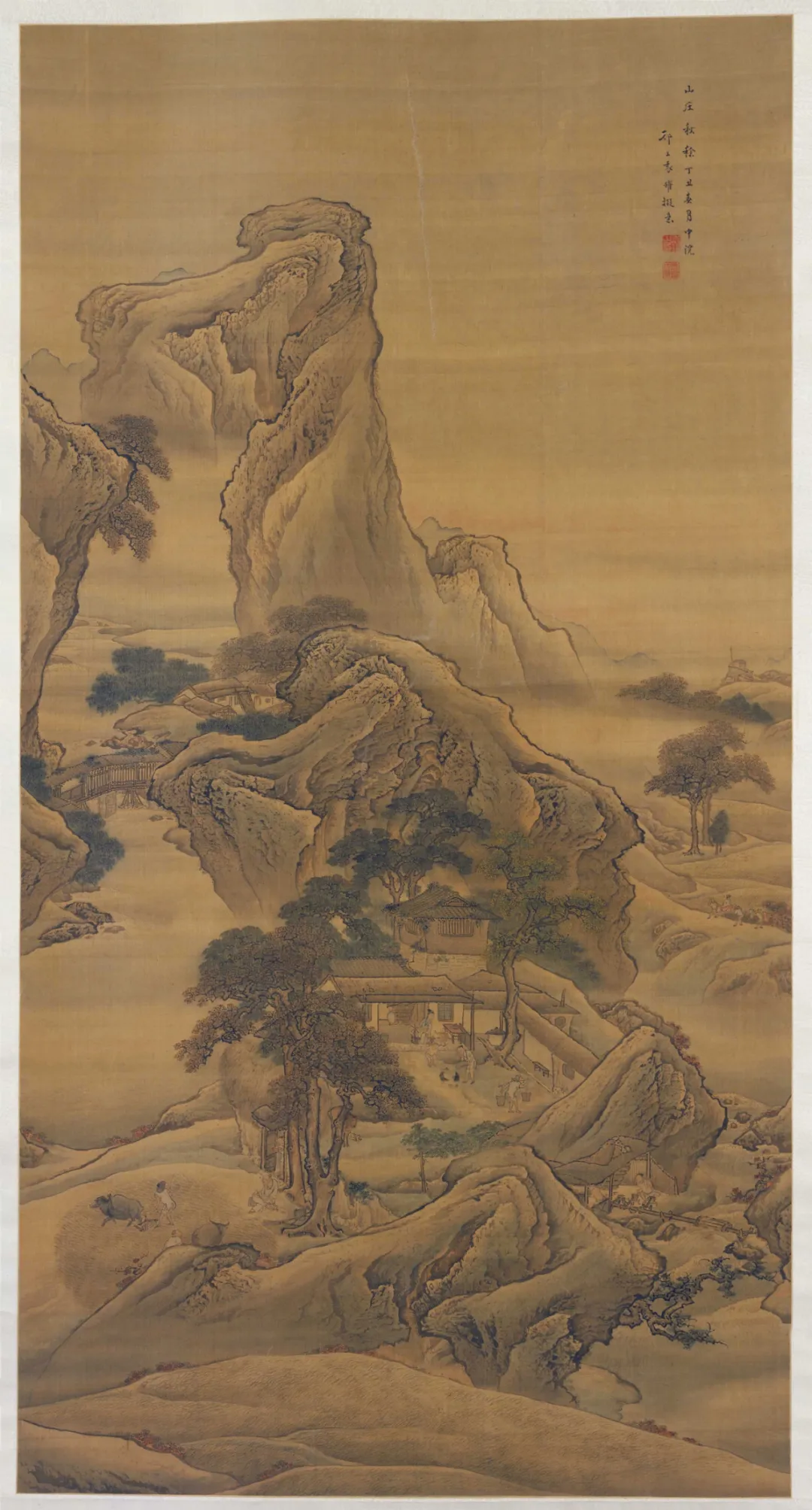
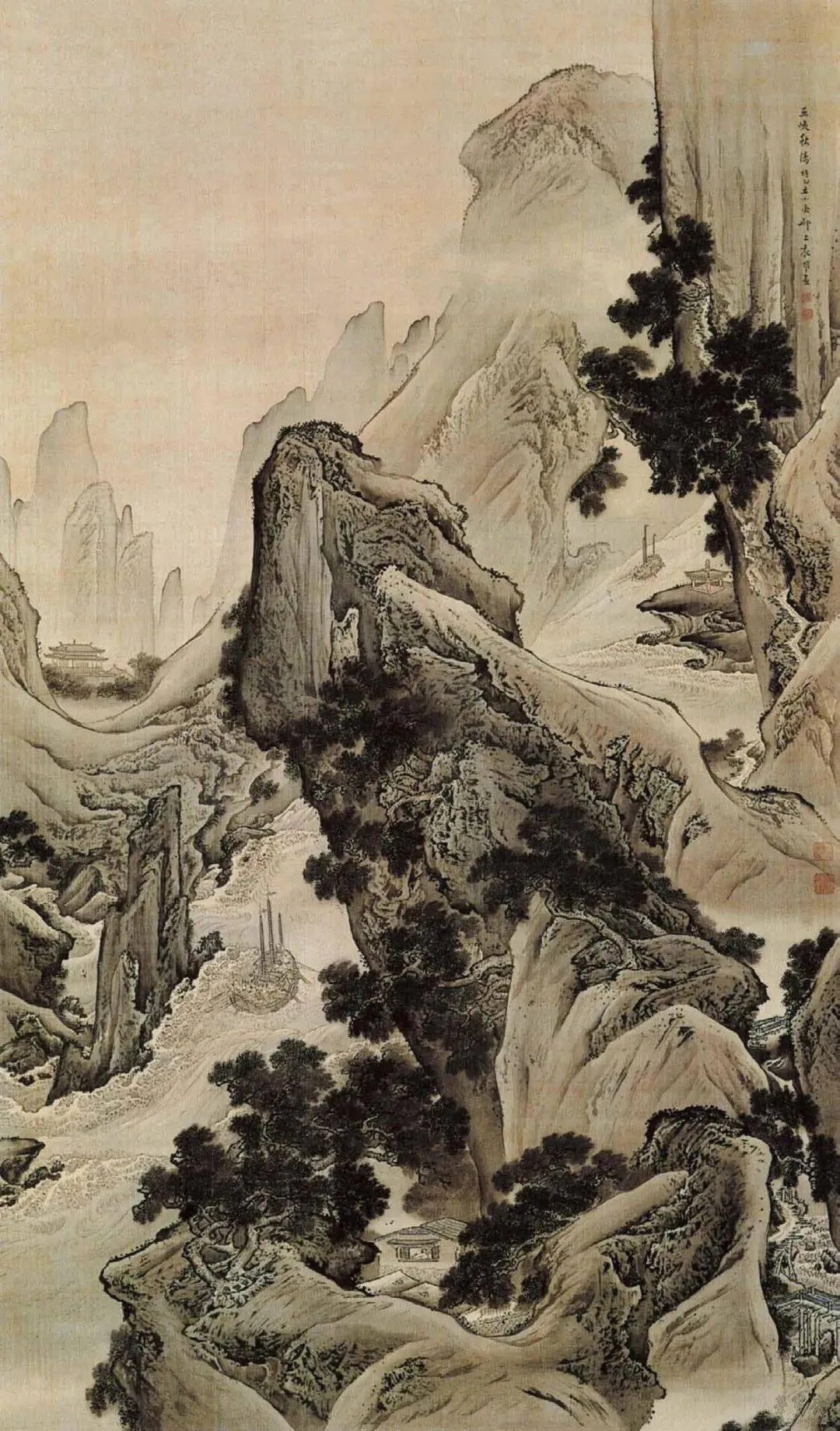
《巫峡秋涛图》
界画者,我国绘事中一奇葩也。其萌芽于秦,据载秦皇并六国,绘各国宫殿图样,堪称界画之先声。至东晋,界画已与人物、山水并列。宋元之际,界画臻于极盛,然久为文人画所抑。宋前界画称“台榭”“台阁”“屋木”“宫观”,至郭若虚《图画见闻志》始名“界画”。郭若虚言:“画屋木者,折算无亏,笔画匀壮,深远透空,一去百斜。隋唐五代及国初郭忠恕、王士元之辈,画楼阁四角分明,斗拱逐铺,向背有致,不失绳墨。今之画者,多用直尺,一就界画,分成斗拱,笔迹繁杂,无壮丽闲雅之意。”是可见其不崇今人直尺界画也。
界画之作,山水楼阁交相辉映,建筑多以界尺绘横竖线条。元明以来,界画渐被轻忽,然明代石锐、杜堇、仇英及清代二袁,皆承此传统,光大其艺。
Architectural painting, a unique genre in Chinese painting, traces its origins to the Qin dynasty. According to historical records, Qin Shihuang, after unifying the six states, had the designs of their palaces drawn, marking the beginning of architectural painting. By the Eastern Jin dynasty, architectural painting coexisted with figure and landscape painting. It reached its peak during the Song and Yuan dynasties but was often overshadowed by literati painting. Before the Song dynasty, architectural painting was known as “terraces and pavilions,” “platforms and towers,” “houses and trees,” or “palaces and temples,” until Guo Ruoxu’s “Records of Painting” coined the term “architectural painting.” Guo Ruoxu wrote, “Those who paint houses and trees must ensure precision without error, with strong and even brushwork, depth and perspective, and diverse angles. From the Sui and Tang to the early Song, artists like Guo Zhongshu and Wang Shiyuan depicted buildings with clear structure and precise angles, adhering to rules. Modern artists often use rulers for architectural lines, resulting in cluttered brushwork lacking grandeur and elegance.” Thus, he did not favor the use of rulers in architectural painting.
Architectural paintings integrate landscapes and buildings, using rulers to draw horizontal and vertical lines for the structures. Since the Yuan and Mingdynasties, architectural painting has received less attention, but Ming artists Shi Rui, Du Jin, Qiu Ying, and Qing artists Yuan Jiang and Yuan Yao inherited this tradition, further developing the art form.
责任编辑:苗君